Energia jest bardzo ważnym aspektem naszego życia. Dzięki niej możemy korzystać z wielu urządzeń, które ułatwiają nam codzienne życie. Istnieje wiele różnych źródeł energii. Dzielą się one na źródła odnawialne i nieodnawialne. Każde źródło energii ma swoje zalety i wady.
Źródła odnawialne energii to takie, które nie ulegają wyczerpaniu na przykład promieniowanie słoneczne, wiatr i woda. Wykorzystywanie odnawialnych źródeł energii ma wiele zalet. Jest to głównie brak emisji szkodliwych substancji takich jak dwutlenek węgla czy siarka. Są też jednak minusy. Budowa infrastruktury wykorzystującej odnawialne źródła energii wymaga bardzo dużych nakładów finansowych oraz ingeruje w krajobraz. Ponadto owe źródła mają ograniczoną dostępność. Ich występowanie jest często zależne od lokalizacji (nie wszędzie są odpowiednie warunki pod budowę elektrowni wodnej lub słonecznej).
Źródła nieodnawialne to takie, które ulegają wyczerpaniu. Są to między innymi ropa naftowa, gaz ziemny i węgiel. Wydobycie i spalanie tych surowców powoduje emisję szkodliwych substancji do atmosfery, co z kolei przyczynia się do zmian klimatu i zanieczyszczenia powietrza. Trzeba także wspomnieć o zaletach nieodnawialnych źródeł energii. Należy do nich głównie większa wydajność z racji, że ich wykorzystanie nie zależy od klimatu i warunków atmosferycznych, ale także możliwość transportu surowców (surowce takie jak węgiel kamienny są możliwe do przetransportowania na duże odległości w przeciwieństwie do odnawialnych źródeł energii).
Bilans energetyczny na świecie.
Bilans energetyczny to procentowy udział poszczególnych źródeł energii zarówno odnawialnych jak i nieodnawialnych w ogólnej produkcji energii na świecie.
Rok 2019
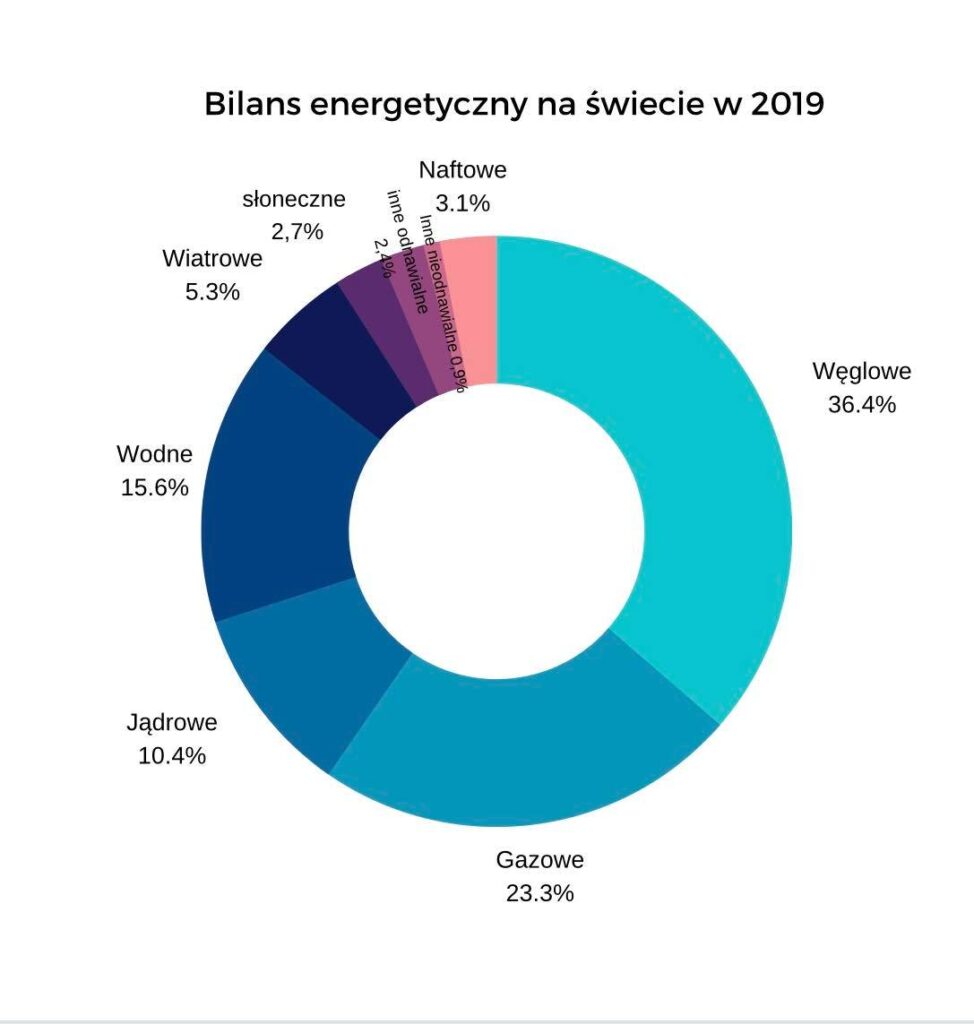
Głównym źródłem energii w Polsce jest węgiel kamienny. Jest tak ponieważ na terenie naszego kraju istnieje jego wiele złóż. Kopalnie znajdują się mdz. in na Górnym Śląsku i Lubelszczyźnie. Poza nim Polska energetyka bazuje również na energii ze źródeł importowanych jak np. gaz ziemny i ropa naftowa importowane z np. Rosji. Jednak źródła te powodują emitowanie do atmosfery szkodliwego dwutlenku węgla co może powodować zmiany klimatyczne.
Celem Unii Europejskiej jest do 2023 roku pozyskiwanie min 32% energii ze źródeł odnawialnych. Swoją popularność odnawialne źródła energii zawdzięczają mdz. in dynamicznemu wzrostowi cen energii. We Francji natomiast aż 70% wyprodukowanej energii pochodzi z elektrownii jądrowych. Jednak sektor OZE jest tam dobrze rozwinięty. Ok 40% pozostałej energii pochodzi z elektrowni wodnych, 31% z wiatrowych a 24% z fotowoltaiki.
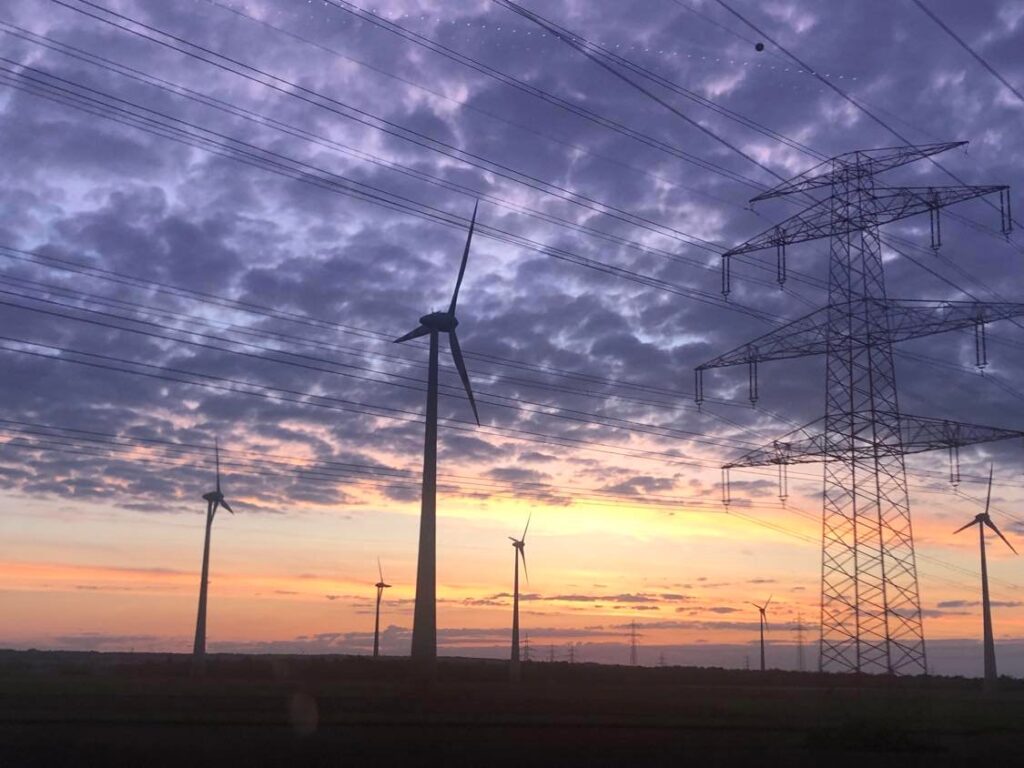
Fotowoltaika i jej rosnąca popularność jest interesującym aspektem. Do roku 2022 w Polsce założono ok 1 mln instalacji czerpiących energię ze światła słonecznego. Panele solarne instalowane są na dachach domów, gdzie naświetlane światłem słonecznym produkują energię. Jest to popularne zarówno we Francji jak i w Polsce, a ich liczba cały czas wzrasta.
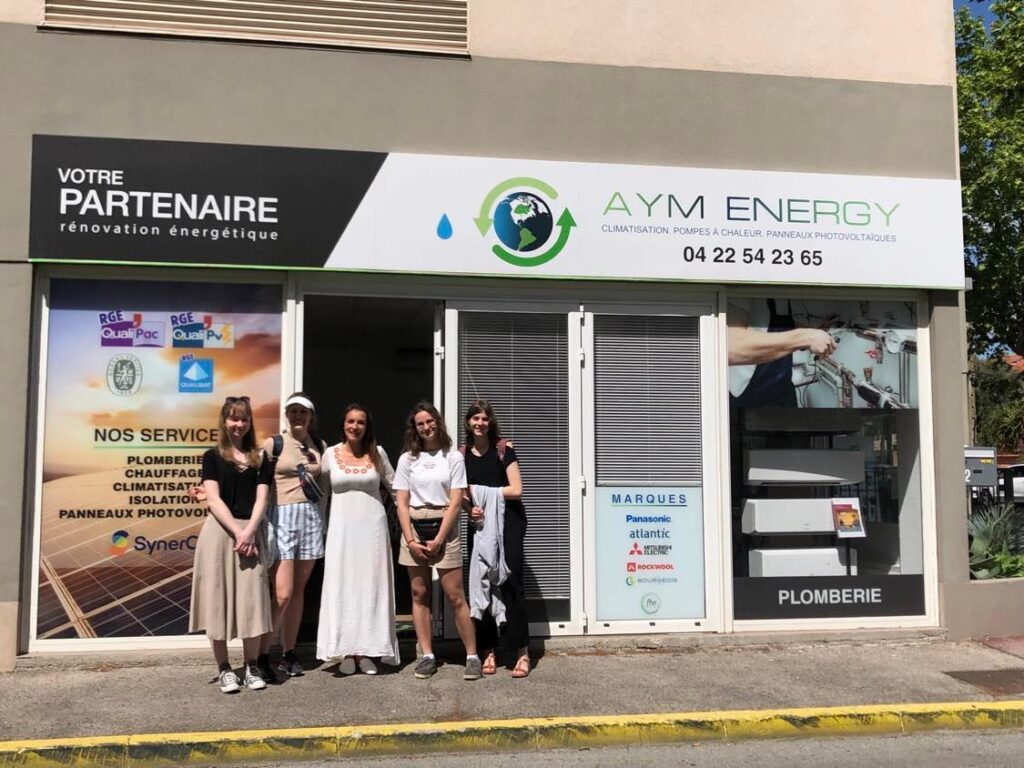
Będąc w Frèjus przeprowadziłyśmy wywiad z pracownikiem firmy sprzedającej panele fotowoltaiczne. Opowiedziała nam ona o ich plusach i minusach.
Plusy fotowoltaiki:
- oszczędzanie pieniędzy. – mniejsze rachunki za prąd – bycie ekologicznym
Minusy fotowoltaiki:
- Umija od 6 do 10 lat zanim koszty zaczną się zwracać. – Droga instalacja i panele
Dzięki rosnącej popularności odnawialnych źródeł energii jest szansa na stopniowe odchodzenie od zazwyczaj szkodliwych źródeł nieodnawialnych. Dzięki ich zużyciu dałoby się zaoszczędzić zasoby naszej planety i poprawić stan środowiska.
Energy in Poland and France
Energy is a very important aspect of our lives. Thanks to it, we can use many devices that make our everyday life easier. There are many different sources of energy. They are divided into renewable and non-renewable sources. Each energy source has its advantages and disadvantages.
Renewable energy sources are those that are inexhaustible, such as solar radiation, wind and water. The use of renewable energy sources has many advantages. It is mainly the lack of emission of harmful substances such as carbon dioxide or sulfur. However, there are also downsides. The construction of infrastructure using renewable energy sources requires very large financial outlays and interferes with the landscape. Moreover, these sources have limited availability. Their occurrence often depends on the location (not everywhere there are suitable conditions for the construction of a hydro or solar power plant).
Non-renewable resources are those that are depleted. These include oil, natural gas and coal. The extraction and burning of these materials causes the emission of harmful substances into the atmosphere, which in turn contributes to climate change and air pollution. We should also mention the advantages of non-renewable energy sources. These include mainly greater efficiency due to the fact that their use does not depend on climate and weather conditions, but also the possibility of transporting materials ( materials such as hard coal can be transported over long distances, unlike renewable energy sources).
Energy balance in the world.
The energy balance is the percentage share of individual energy sources, both renewable and non-renewable, in the total energy production in the world
Year 2019
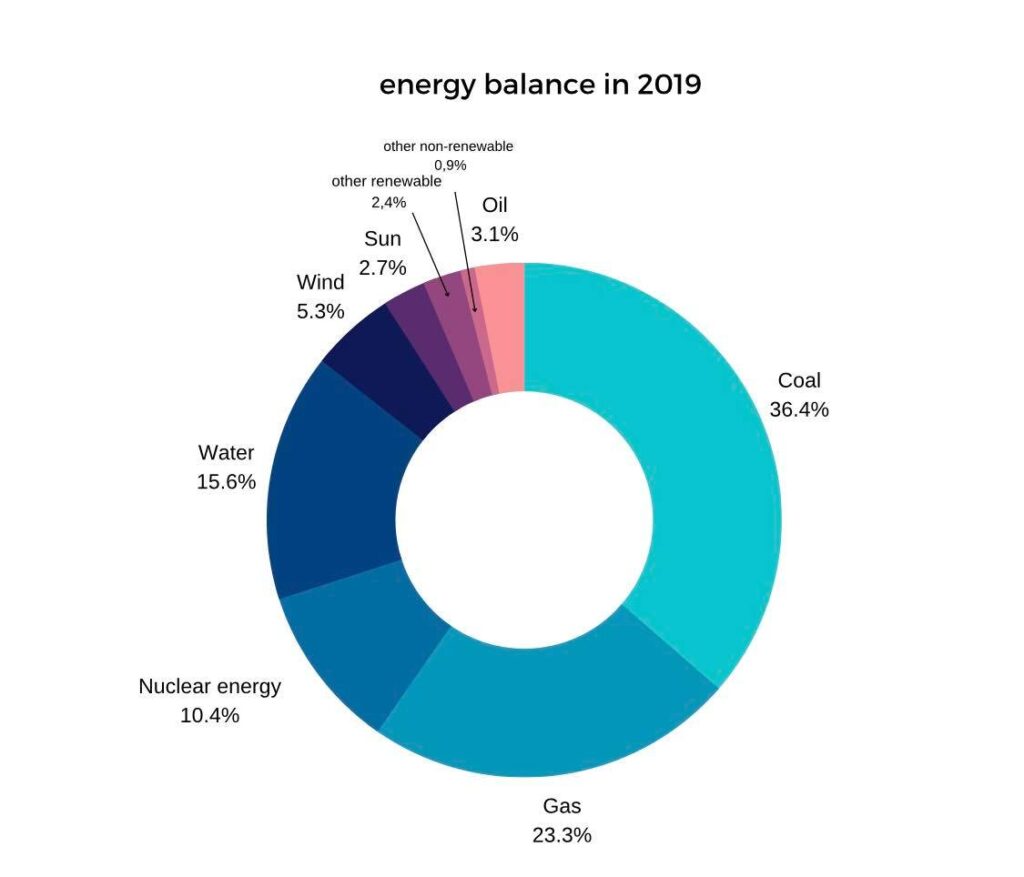
The main source of energy in Poland is hard coal. This is because there are many deposits in our country. The mines are located for example in Górny Śląsk and Lublin region. However, its extraction is quite expensive, because it requires very deep excavations. Apart from it, the Polish energy sector is also based on energy from imported sources, such as natural gas and crude oil imported from, for example Russia. However, these sources emit harmful carbon dioxide into the atmosphere, which can cause climate change. However, both in Poland and in the world, the so-called. renewable energy sources.
The goal of the European Union is to obtain at least 32% of energy from renewable sources by 2023. The popularity of renewable energy sources is due to in the dynamic growth of energy prices.
In France, as much as 70% of the energy produced comes from nuclear power plants. However, the RES sector is much more developed there. About 40% of the remaining energy comes from hydro power plants, 31% from wind power plants and 24% from photovoltaics.
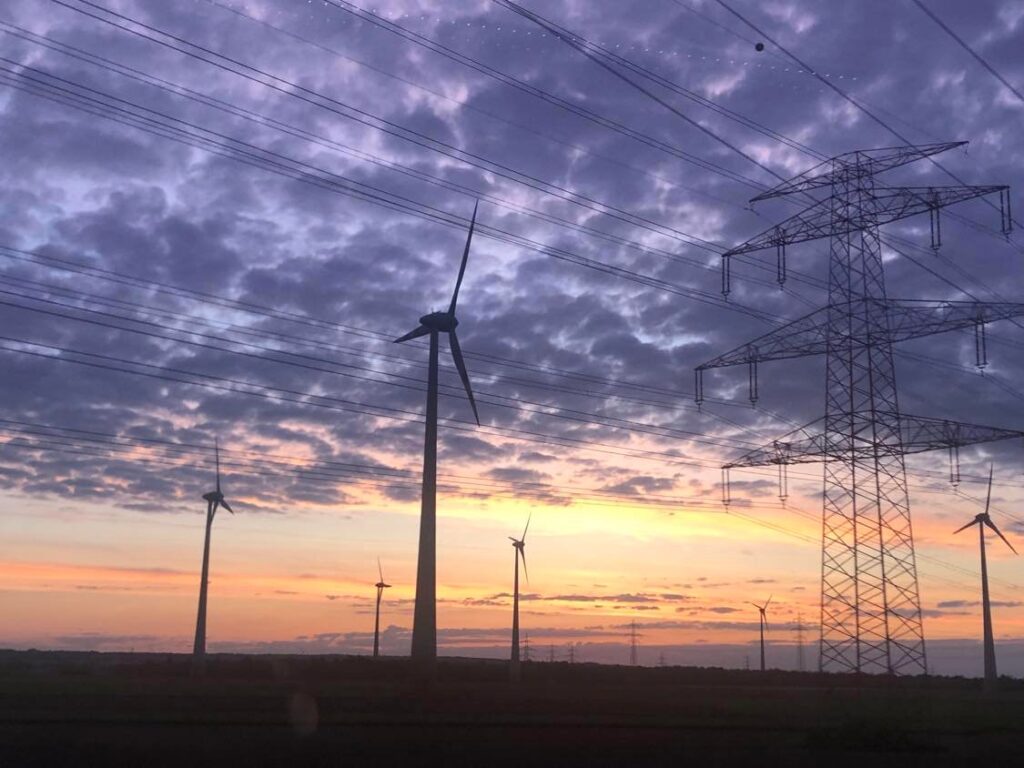
An interesting aspect here is photovoltaics and its growing popularity. By 2022, about 1 million solar installations have been installed in Poland. Solar panels are installed on the roofs of houses, where they produce energy when irradiated with sunlight. It is popular both in France and Poland, and their number is constantly increasing.
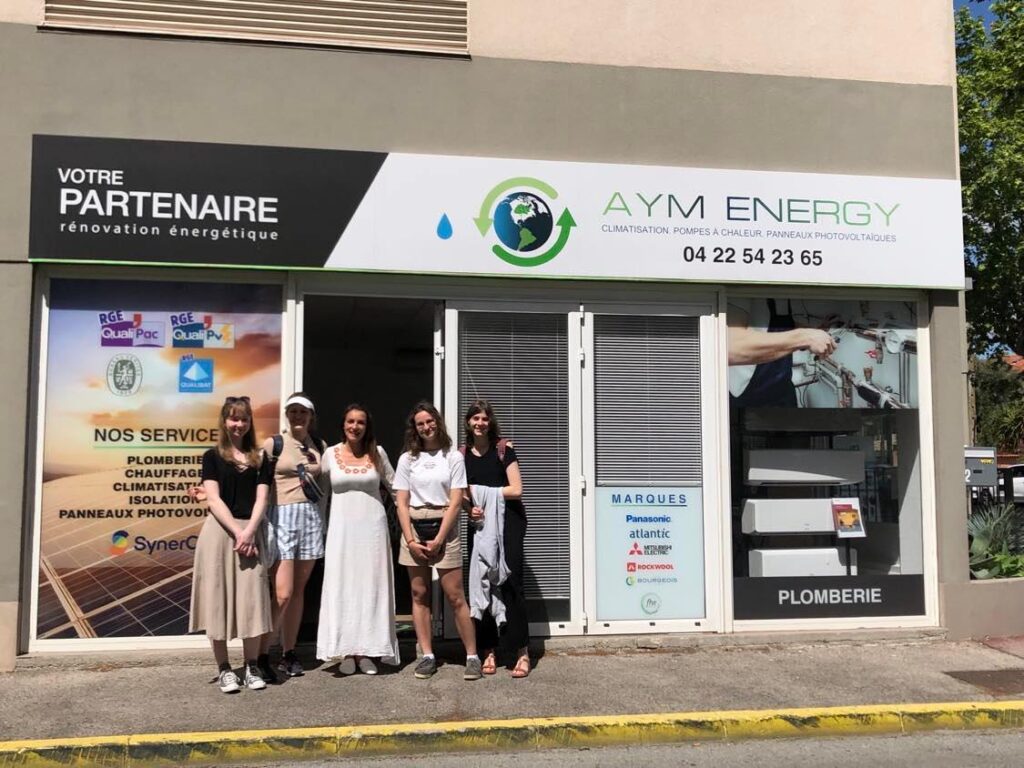
While in Frèjus, we interviewed a worker from a company selling photovoltaic panels. She told us about their pros and cons.
Pros of photovoltaic:
- saving money. – lower electricity bills. – being ecological
Cons of photovoltaic:
- It takes from 6 to 10 years before the costs start to pay off. – expensive installation and panels
Thanks to the growing popularity of renewable energy sources, there is a chance to gradually move away from the usually harmful non-renewable sources. Thanks to their use, it would be possible to save our planet’s resources and improve the condition of the environment.